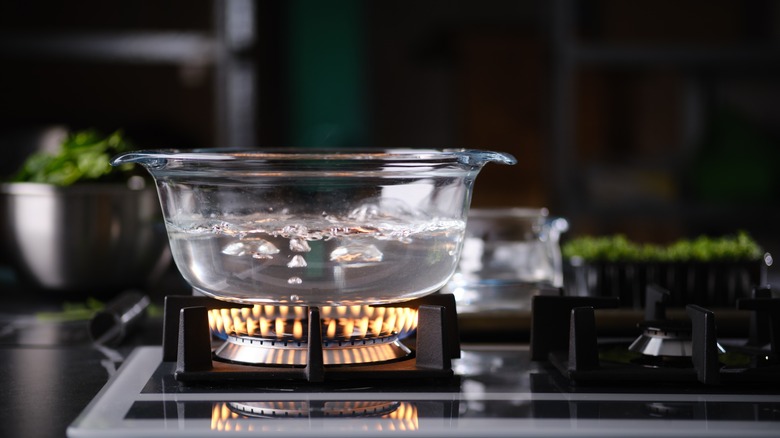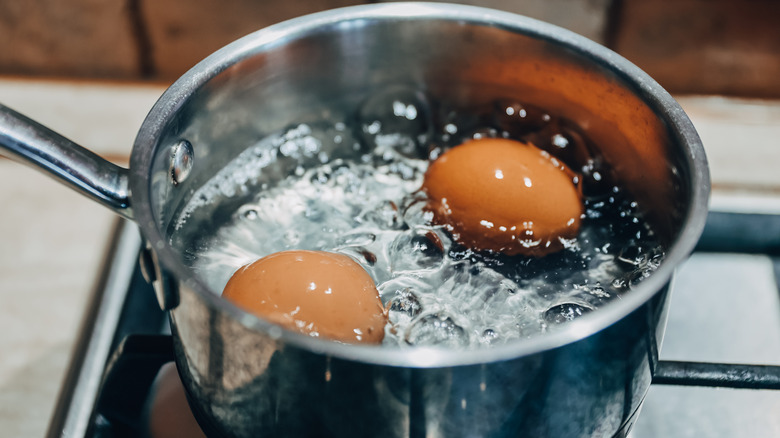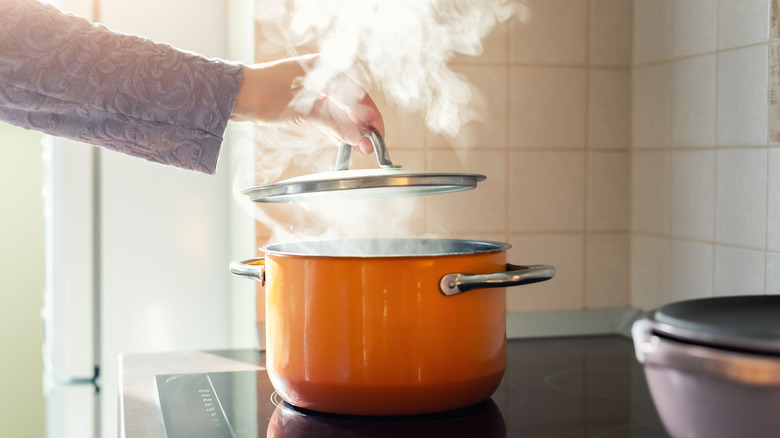The Reason Recipes Tell You To Boil, Then Simmer
Whether you're whipping up a pot of pasta or a batch of flavorful mashed potatoes, you'll probably encounter instructions like "boil, then simmer" in the recipe instructions. But why start with a boil if you're ultimately aiming to simmer? Rest assured, the recipe writer isn't trying to trick you into wasting precious electricity or gas; they're trying to improve your cooking.
Yep, there's some solid culinary reasoning behind this recommendation. The most obvious of which has to do with efficiency. Bringing a liquid to a boil and then reducing it to a simmer is a quicker way to reach the desired temperature. Temperature control and consistency are also important factors. When a liquid is already boiling, turning down the temperature dial to a simmer is quick and easy. Attempting to do the reverse — raising the temperature to reach a boil from a simmer — takes more time. This approach also ensures more even heating of the food you're planning to simmer.
The science of simmering
Understanding the scientific and subjective differences between boiling and simmering can make you a better home cook. Scientifically, boiling and simmering happen at different temperatures, with simmering happening around 195-211 degrees Fahrenheit and boiling at 212 degrees Fahrenheit. Simmering is characterized by small bubbles rising from the bottom of the pot to the surface, and with boiling, bubbles become larger and break the surface of the water. When the temperature of the liquid is a consistent 212 degrees throughout, it reaches what's called a rolling boil, where the bubbles break the surface more forcefully and the bubbles aren't deterred by a stir or two.
The differences go beyond numbers, they can make an impact on the food you're cooking. Take hard-boiled eggs, for example. An initial boil kickstarts the cooking process, and then reducing the heat to a simmer lets the eggs gently cook. This method allows the eggs to cook evenly, minimizing the risk of cracking and ensuring a more uniform cook. The result is typically a tender egg white and a well-cooked, creamy yolk. On the other hand, leaving your eggs at a rolling boil throughout can cause the eggs to bounce around, leading to cracked shells and potential leakage of the egg white. Additionally, a continuous boil can overcook the eggs, resulting in a rubbery white and a greenish-gray ring around the yolk — a telltale sign of overcooking and a reaction between sulfur and iron compounds in the egg.
How to boil and simmer like a pro
Heating water may be the world's most basic cooking technique, but it's useful to know the difference between a boil and a simmer. The next time you're bringing a liquid to a boil, try to pick out the point where simmering starts, then use an instant-read thermometer to test your observation. The same goes for boiling — keep your eyes peeled for big bubbles that break the surface. Once your liquid reaches a boil, gradually lower the heat.
Simmering aims to reduce the intensity of the bubbles without extinguishing them completely. If you reduce the heat too much, your dish may take longer to cook. Another common mistake is not reducing the heat enough, which can lead to overcooking or burning. This is especially problematic for dishes that require a delicate touch, like sauces or custards. Don't be afraid to change the heat back and forth until you find the sweet spot. With practice, you'll develop a sense of when a dish needs a vigorous boil or a gentle simmer, elevating your cooking from good to great.


